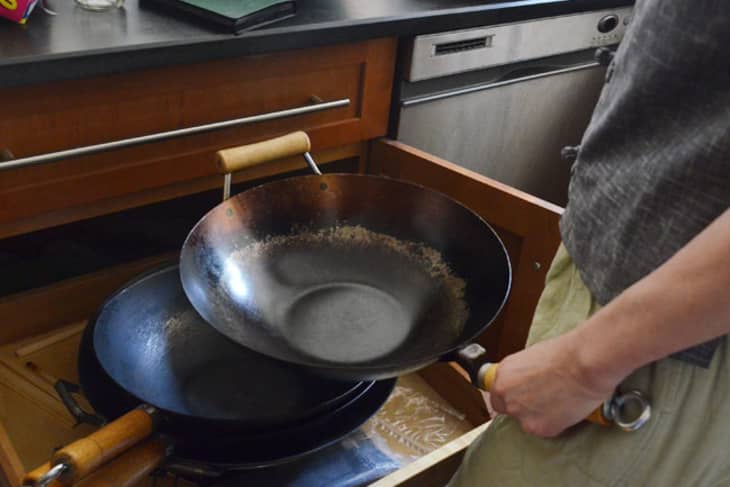The $35 Wok That Every Home Cook Should Own, According to Grace Young
As far as I’m concerned, the wok is the coolest, most versatile cooking utensil ever invented. And it’s been around for 2,000 years, so that’s saying a lot. (We basically didn’t need to spend any more time innovating since then!) See, a wok is not just for stir-frying — oh no, you can use a wok to steam, boil, poach, roast, pan-fry, deep-fry, braise, smoke, and even pop popcorn. I’ve done it all, in my New York apartment, using my favorite 14-inch, flat-bottomed, carbon-steel wok equipped with two wooden handles (one long and one short).
Why I Love This Wok
After using woks made of various materials, I strongly believe that the pan should be made of carbon steel — because it’s durable, inexpensive, heats quickly, and can become virtually nonstick (if you’re careful to season it correctly). I like that it has a flat bottom (more on that below) and find the 14-inch diameter to be the perfect size, no matter what I’m cooking. Go bigger and it’s just unwieldy; any smaller and you won’t have enough room for your food. Plus, the two wood handles stay relatively cool while cooking and add both safety and convenience points.
Related: How to Buy and Season a New Wok
Picking the Best Wok for Your Stove
I pointed out that I have a flat-bottomed wok. While round-bottomed woks are traditional to Chinese cooking, they don’t work well on most gas and electric ranges that are common in the United States. I cook on a residential gas stove and like that the wok sits directly on the burner. With wok cooking heat is key, so I like this direct contact (plus a round-bottomed wok would not be stable on the burner).
If you cook on a semi-professional gas range — such as a Viking, Wolf, or BlueStar — the heat will be hot enough that you can effectively use a round-bottomed carbon-steel wok, stabilized by a wok ring. (If you have a regular, residential range, it won’t get hot enough to reach up through the ring and create enough heat in the well of the wok.)
In a perfect world, we’d all be cooking with gas stovetops, but that’s not the case. And I am frequently asked which wok to buy for induction and glass-topped ranges. Here, there is sadly no easy answer. Some cooks have no problem using the flat-bottomed carbon-steel wok with these stovetops, but there can be issues. Heat can slightly warp a carbon-steel pan, and some flat-top stoves will not even turn on unless the pan sits perfectly flat. (Tip: Slightly tilting the wok handle up or down can solve this problem.) While many cooks like a flat-bottomed cast iron wok with an enamel exterior, it could scratch a glass surface. Plus, I find that cast iron woks are super-heavy, clumsy to use, and can overcook food.
All of this brings me back to my personal favorite: the 14-Inch Flat-Bottom Carbon Steel Wok With Wood Side Handle. In my professional opinion, it’s the best wok for nearly every home cook out there. Get it at the Wok Shop in San Francisco or ask the owner, Tane Chan, for a second opinion. I do think she’ll back me up, though.
Grace Young’s Stir-Frying to the Sky’s Edge is Kitchn’s August pick for our Cookbook Club. See how you can participate here.
